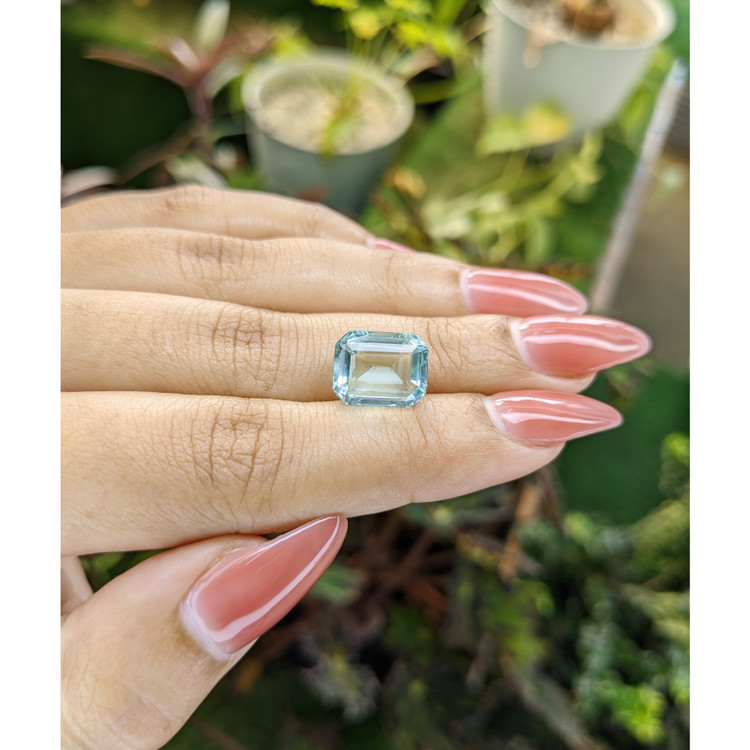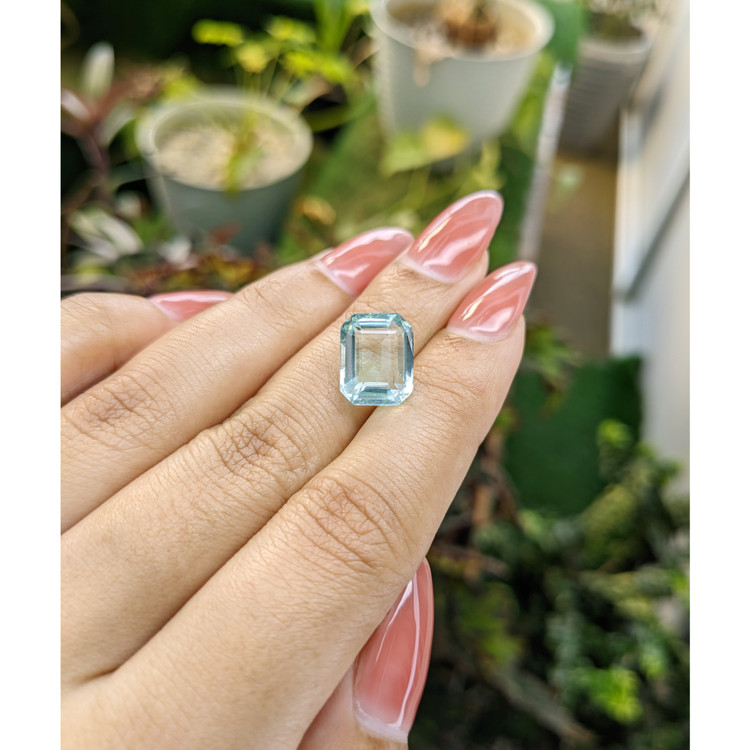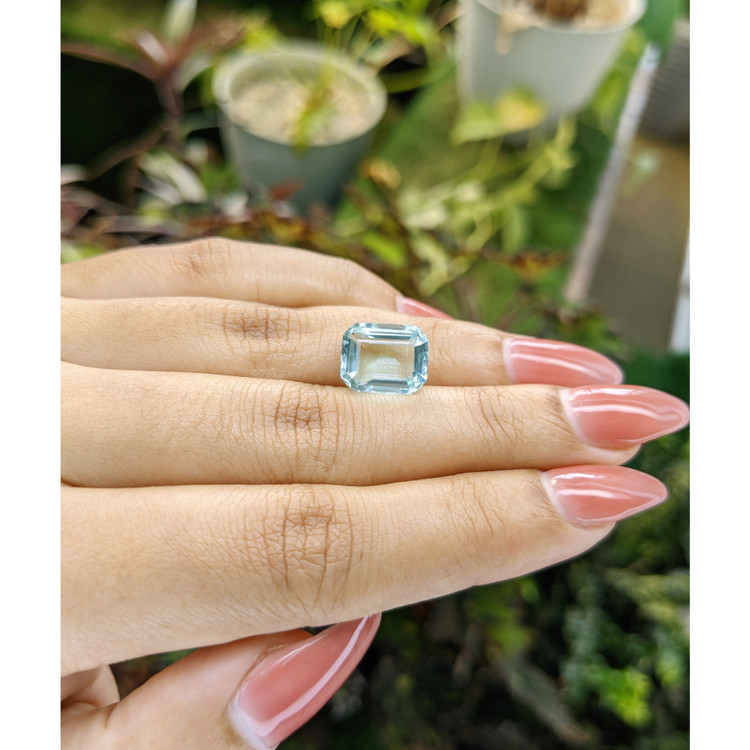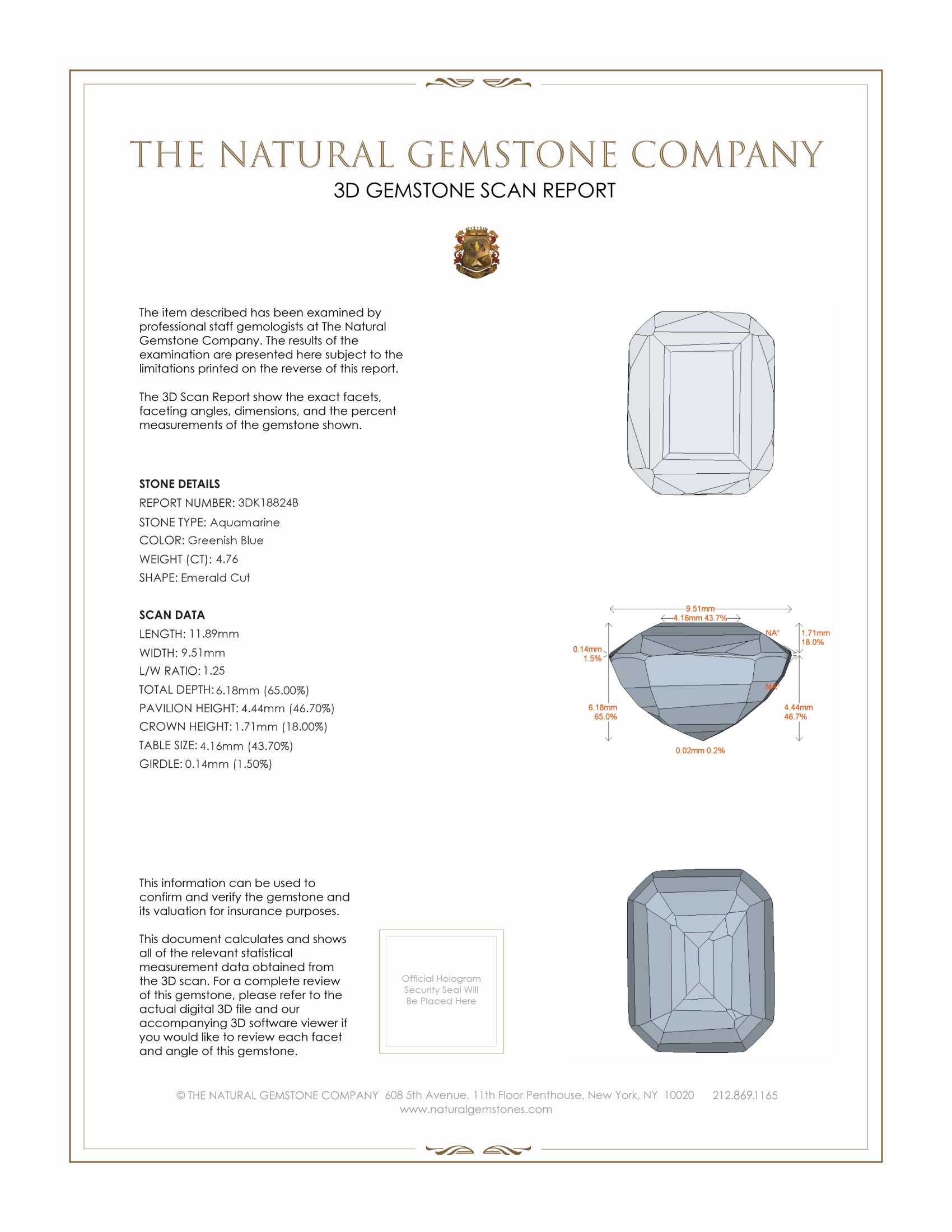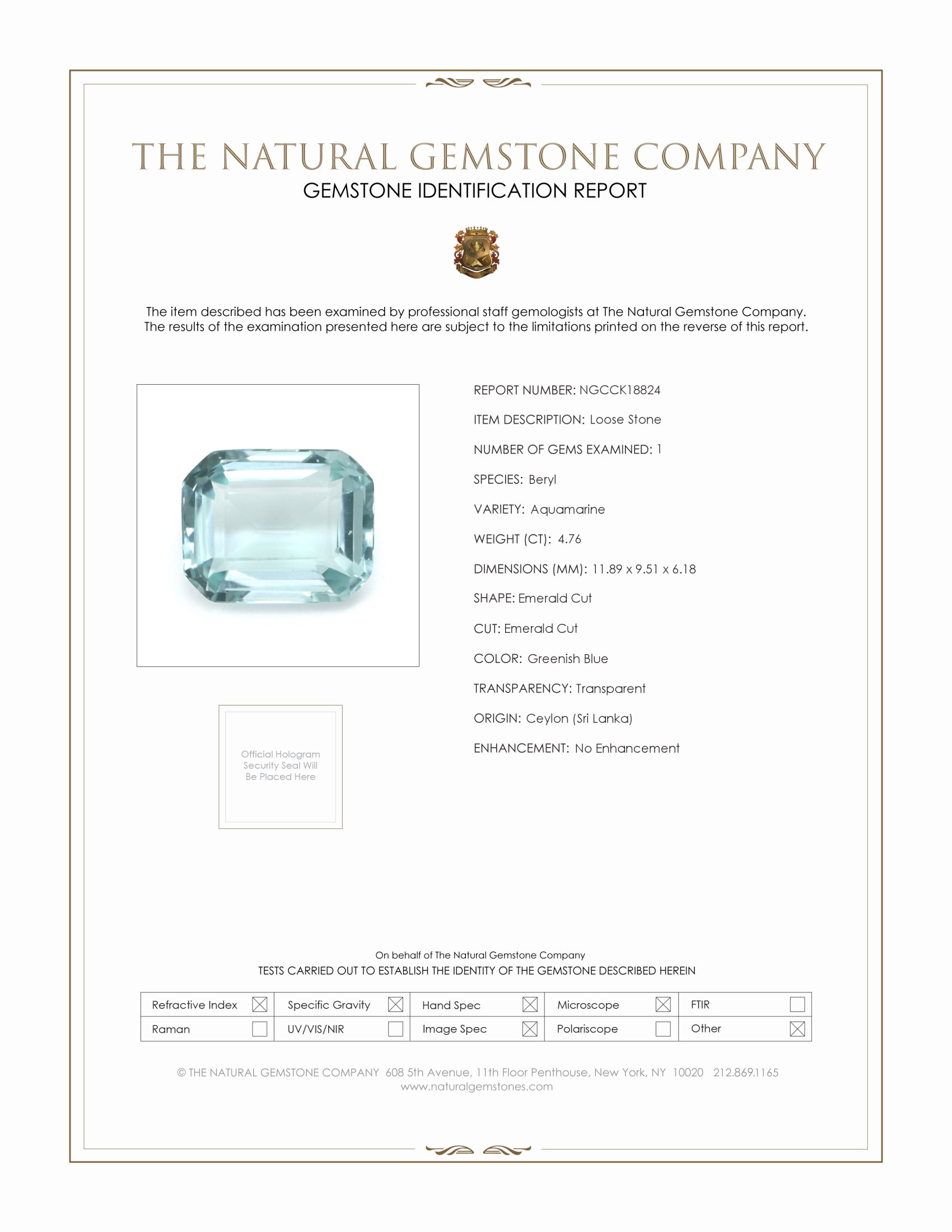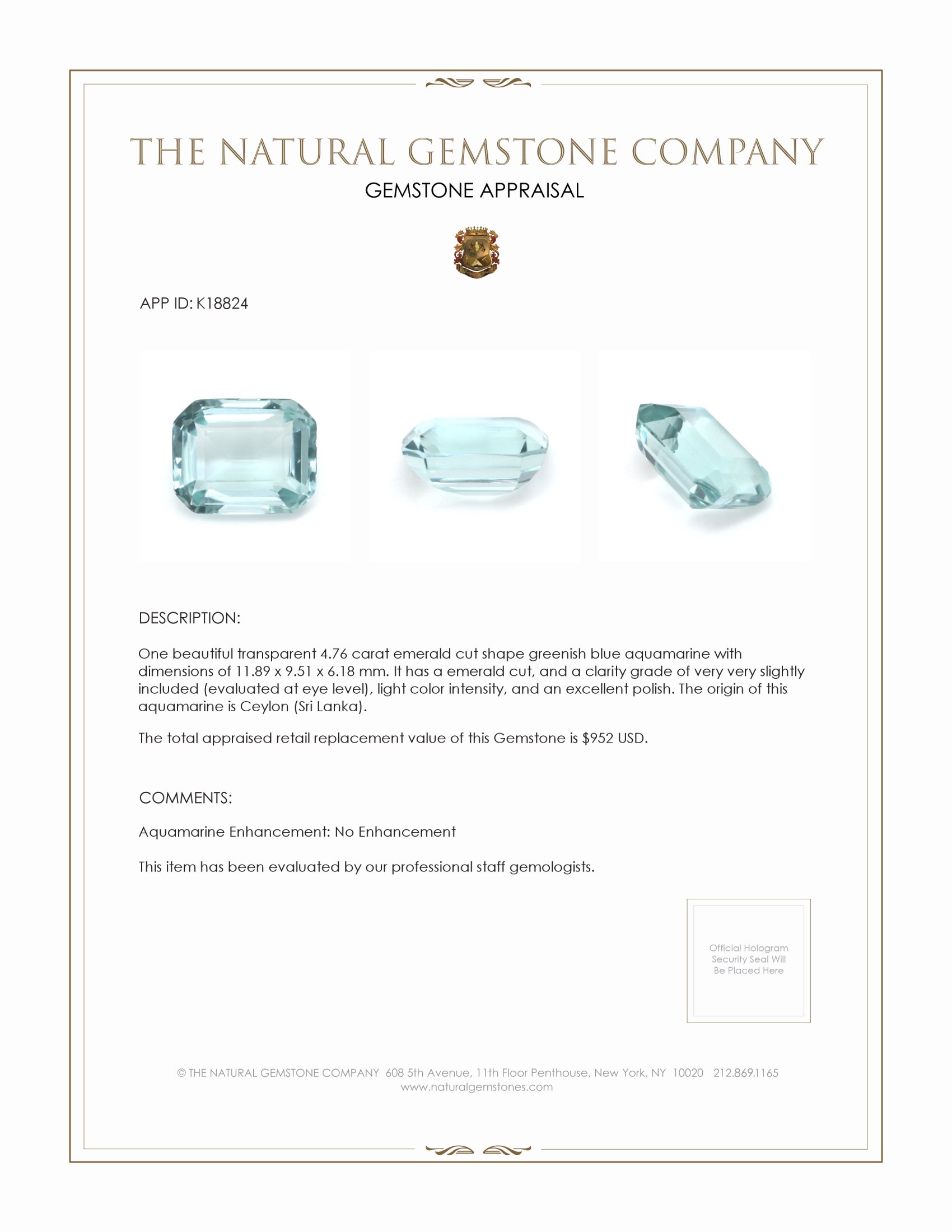- Stone14
- Reports3
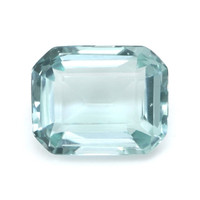

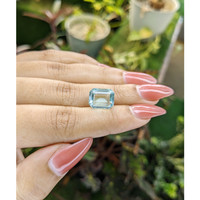
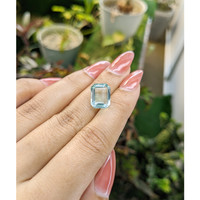
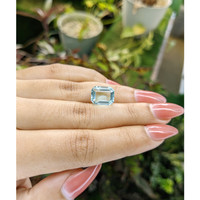

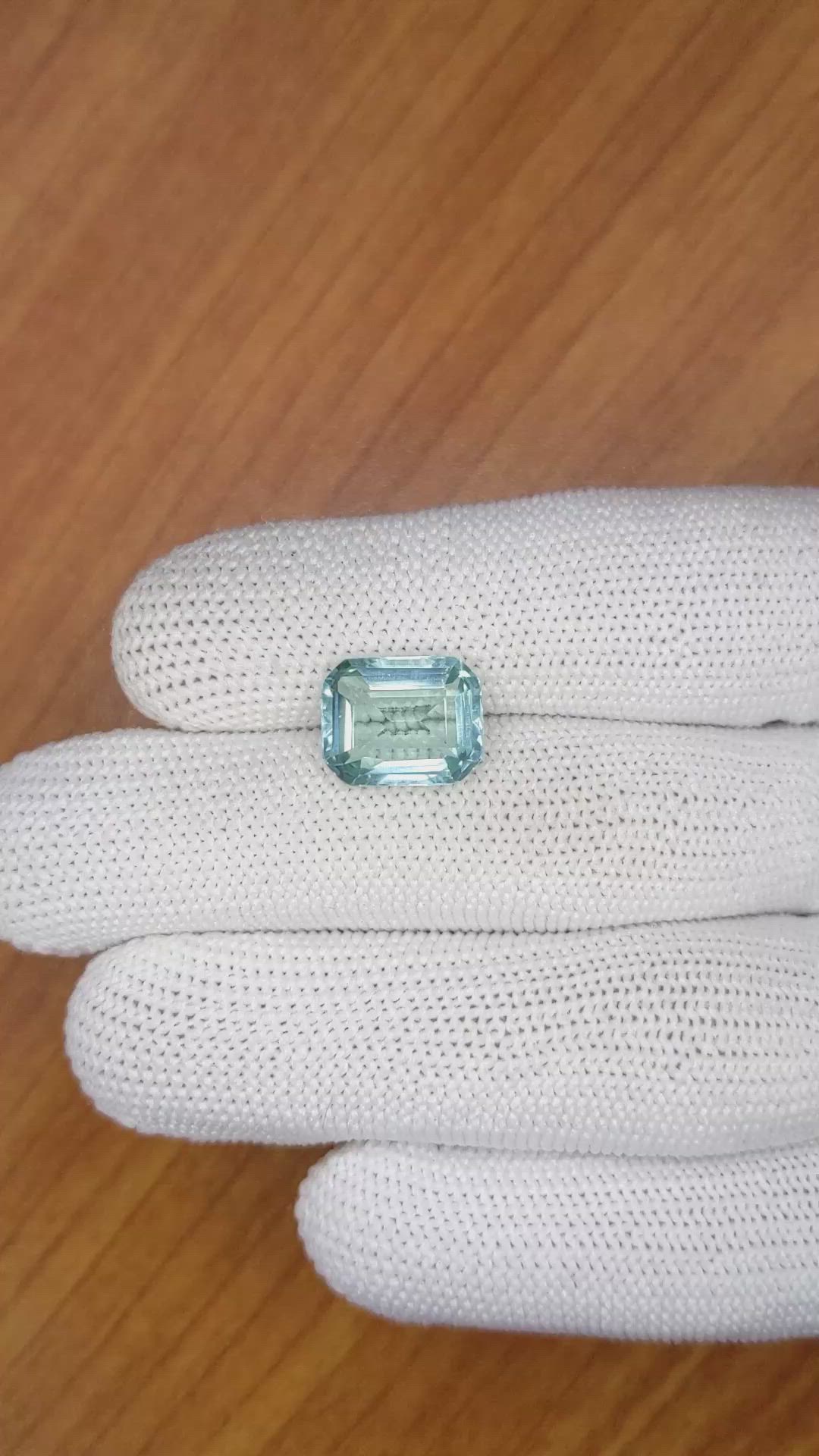
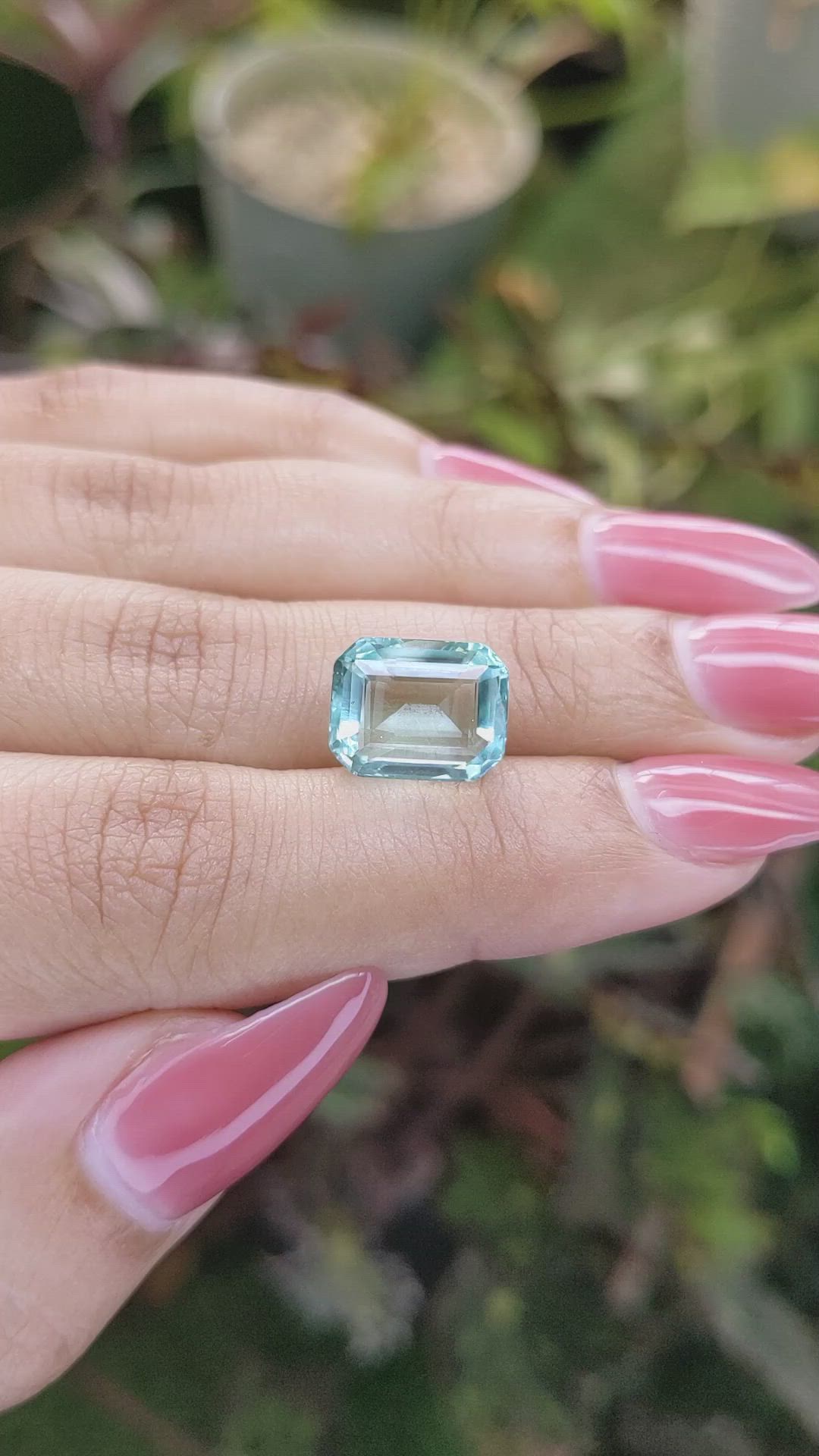
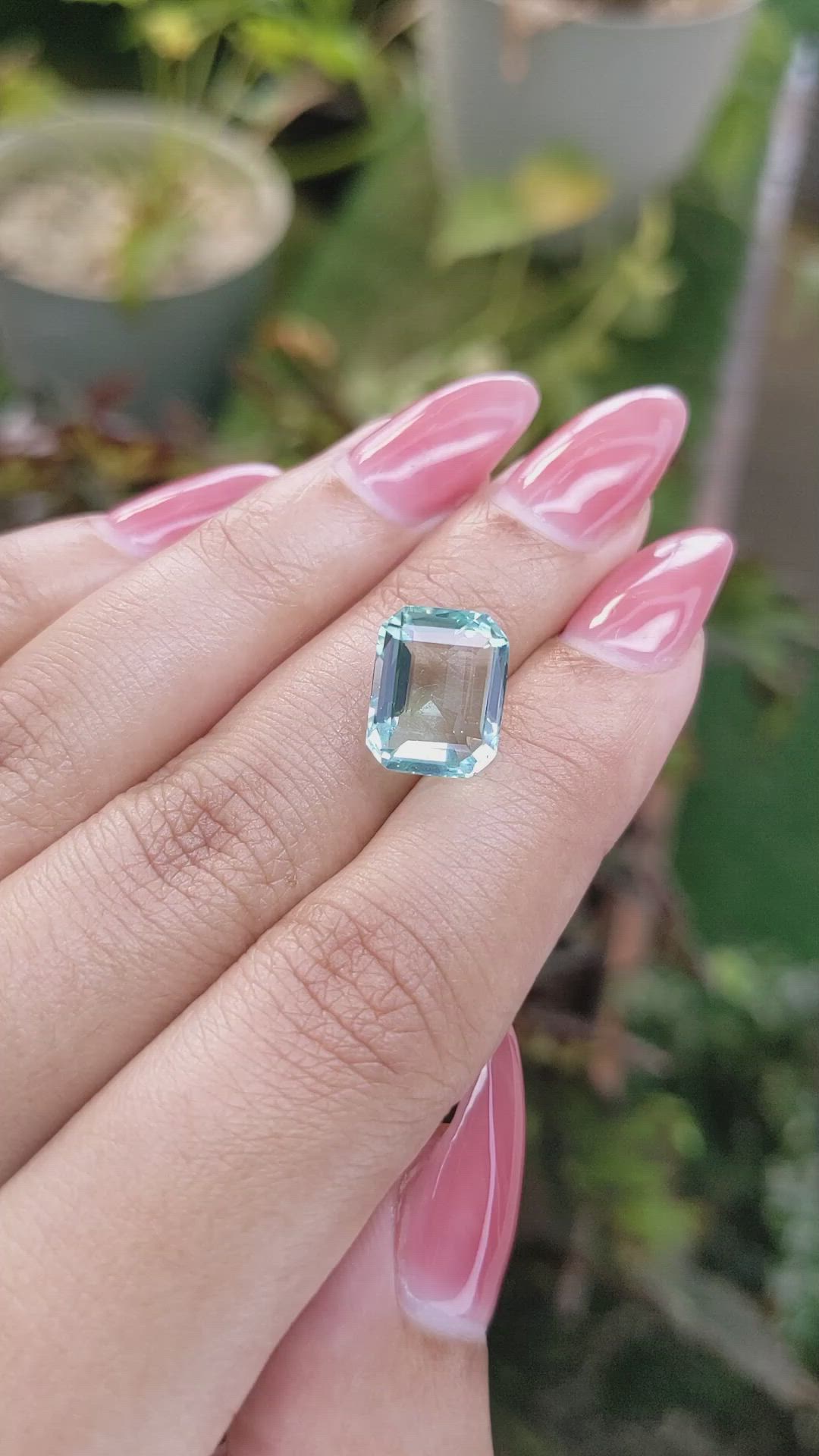
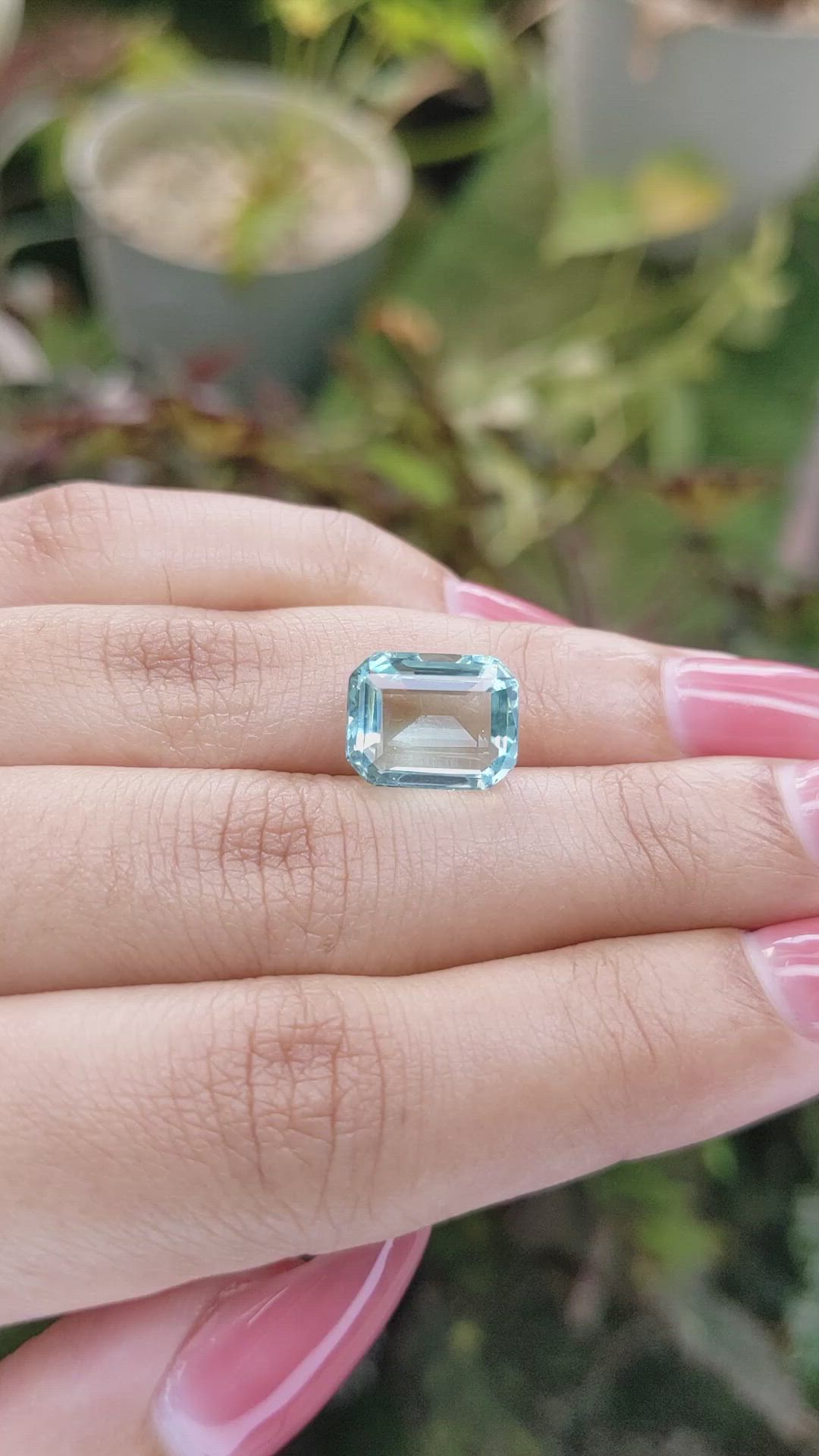




4.76 Ct. Aquamarine from Ceylon (Sri Lanka)
This loose stone ships by Jan 10
Item ID: | K18824 |
|---|---|
Dimensions (MM): help | Length: 11.89 Width: 9.51 Height: 6.18 |
Weight: | 4.76 Ct. |
Color: help | Greenish Blue |
Color intensity: help | Light |
Clarity: help | Very Very Slightly Included |
Shape: help | Emerald Cut |
Cut: | Emerald Cut |
Cutting style: | Faceted |
Enhancements: help | No Enhancement |
Origin: help | Ceylon (Sri Lanka) |
Per carat price: help | $200 |
This specimen is a transparent 4.76 carat aquamarine, emerald cut shape, with precise dimensions of 11.89 x 9.51 x 6.18 millimeters, sourced from Ceylon Sri Lanka and offered by The Natural Gemstone Company. The emerald cut has been executed in a classic step facet design, featuring a large table plane, parallel crown and pavilion facets, and well controlled facet junctions that emphasize depth and color zoning rather than scintillation. The gem displays a greenish blue hue with light color intensity, a balance that reads as fresh and delicate in direct and diffused lighting. The length to width ratio is approximately 1.25, yielding a slightly rectangular outline that is proportionally elegant and suitable for a wide range of settings. The cutter has prioritized planar symmetry and parallelism of the step facets to produce uniform broad flashes of color and a refined hall of mirrors effect that showcases the stone s transparency and internal features.
Clarity has been evaluated at eye level as very very slightly included, indicating that the stone is effectively clean to the naked eye, with inclusions limited to minor pinpoint or silklike features that do not detract from face up appeal. These inclusions are largely internal and do not compromise structural integrity, an important consideration for step cut geometries where facet lines can reveal internal characteristics. No enhancement has been applied to this aquamarine, the stone is untreated, which means its color and clarity are wholly natural and stable. Technical properties of beryl family aquamarine apply here, including a refractive index typically in the range of 1.577 to 1.583 and a birefringence around 0.005 to 0.009, values that account for the modest brilliance and strong vitreous luster seen in the finished piece. Specific gravity is near 2.68 to 2.74, and Mohs hardness measures approximately 7.5 to 8. These metrics collectively explain the stone s ability to hold crisp facet edges while offering sufficient hardness for everyday wear when set appropriately.
Craftsmanship details are significant in explaining why this aquamarine will continue to captivate over years. The cutter achieved a depth proportion that works with the length and width to deliver consistent light return rather than excessive leakage or windowing, the measured depth relative to the average table dimensions is approximately fifty eight percent, a proportional zone that supports the stone s light performance while preserving face up color. Facet junctions show consistent polish and alignment, an attribute reinforced by the excellent polish grade, which yields crisp facet planes and high facet luster. The step cut lends structural advantage, distributing potential impact forces across parallel planes and reducing the likelihood of stress concentration points, provided the girdle thickness is controlled and protective settings are used for rings. Over time the untreated color will remain stable under normal wear conditions, and the excellent polish will retain its attractive finish with routine gentle cleaning. For longevity avoid exposure to harsh chemicals and sudden thermal shock, clean with warm soapy water and a soft brush, and have settings inspected periodically to ensure the stone remains secure.
As an adjunct note on complementary materials, White Opal provides an interesting contrast to aquamarine when used in paired or cluster designs, and deserves technical mention. White Opal is classified by its light body tone, often displaying a translucent to opaque white base with play of color ranging from subtle to vivid depending on specimen quality. White Opal s optical character is dominated by diffraction based play of color, best exhibited in cabochon form where dome geometry enhances the broad spectral flashes. Physical considerations for White Opal include a lower hardness of approximately 5.5 to 6.5 on the Mohs scale, and a higher susceptibility to dehydration, crazing, and thermal shock compared to beryl, so settings and care must account for that sensitivity. When paired with an aquamarine of this size and clarity, White Opal can provide dynamic color contrast, the opal s shifting color fields set against the aquamarine s steady greenish blue offering visual interest. The Natural Gemstone Company sources this aquamarine from Ceylon with documented origin and applies rigorous cutting and polishing standards to present a natural, untreated gem that will retain technical integrity and aesthetic appeal for decades, a piece that will continue to captivate both the connoisseur and the wearer through its precise proportions, stable natural color, and enduring craftsmanship.





